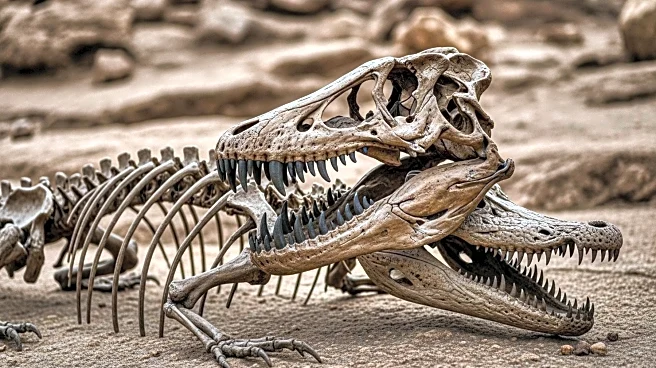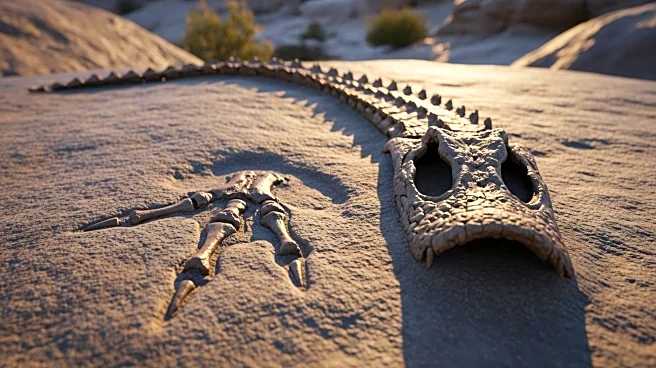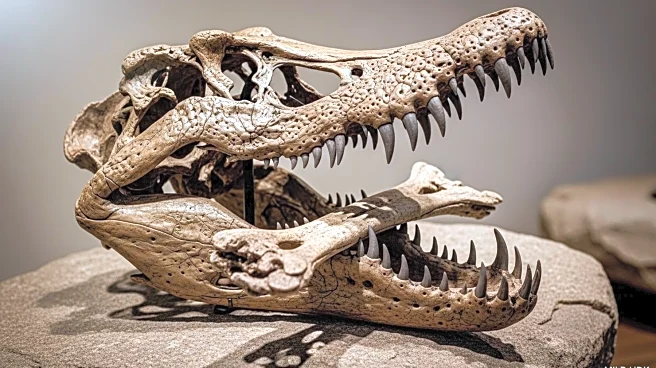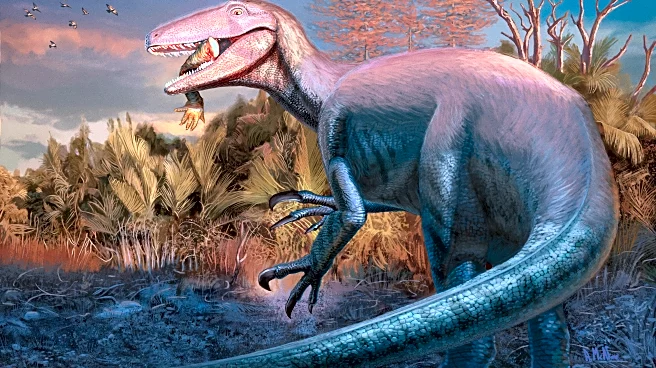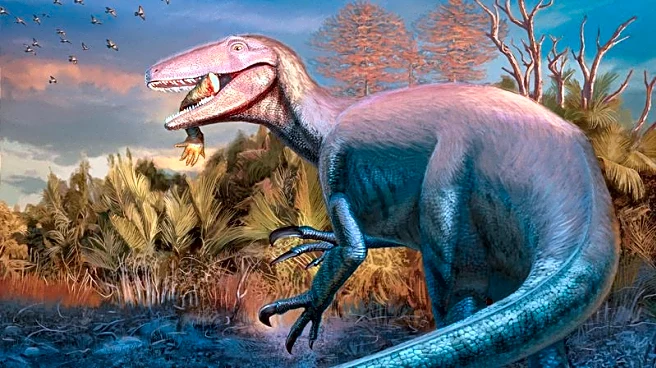What's Happening?
Paleontologists have uncovered a new species of megaraptor dinosaur in Argentina, named Joaquinraptor casali. This apex predator, estimated to be over 23 feet long and weighing more than 2,200 pounds, was found with a crocodile leg bone in its mouth, suggesting it may have preyed on ancient crocodiles. The discovery provides significant insight into the diet of megaraptors, a clade of carnivorous dinosaurs known for their large size and powerful claws. The fossil, one of the most complete megaraptor specimens found to date, includes parts of the jaws, skull, forelimbs, legs, and tail vertebrae. Researchers estimate the dinosaur lived around 68 million years ago, close to the end-Cretaceous extinction event.
Why It's Important?
The discovery of Joaquinraptor casali is crucial for understanding the ecological dynamics of prehistoric Patagonia, where megaraptors filled the apex predator role in the absence of tyrannosaurs. This find adds a new species to the roster of dinosaurs and helps fill gaps in the understanding of megaraptor evolution and behavior. The presence of a crocodile bone in its mouth offers direct evidence of its diet, contributing to the broader knowledge of predator-prey relationships in ancient ecosystems. This research enhances the scientific community's understanding of dinosaur biodiversity and adaptation strategies during the late Cretaceous period.
What's Next?
Further analysis of the Joaquinraptor casali fossil may reveal more about its hunting strategies and ecological role. Researchers will continue to study the microstructure of its bones to determine its growth patterns and age at death. The discovery may prompt additional paleontological expeditions in Patagonia to uncover more specimens and expand knowledge of megaraptorans. The findings could also influence future studies on dinosaur extinction events and the evolutionary pathways of predatory dinosaurs.
Beyond the Headlines
The discovery highlights the importance of paleontological research in understanding ancient ecosystems and evolutionary biology. It raises questions about the ecological niches occupied by megaraptors and their interactions with other species. The naming of the dinosaur in memory of the researcher's son adds a personal dimension to scientific discovery, emphasizing the human element in scientific exploration.

